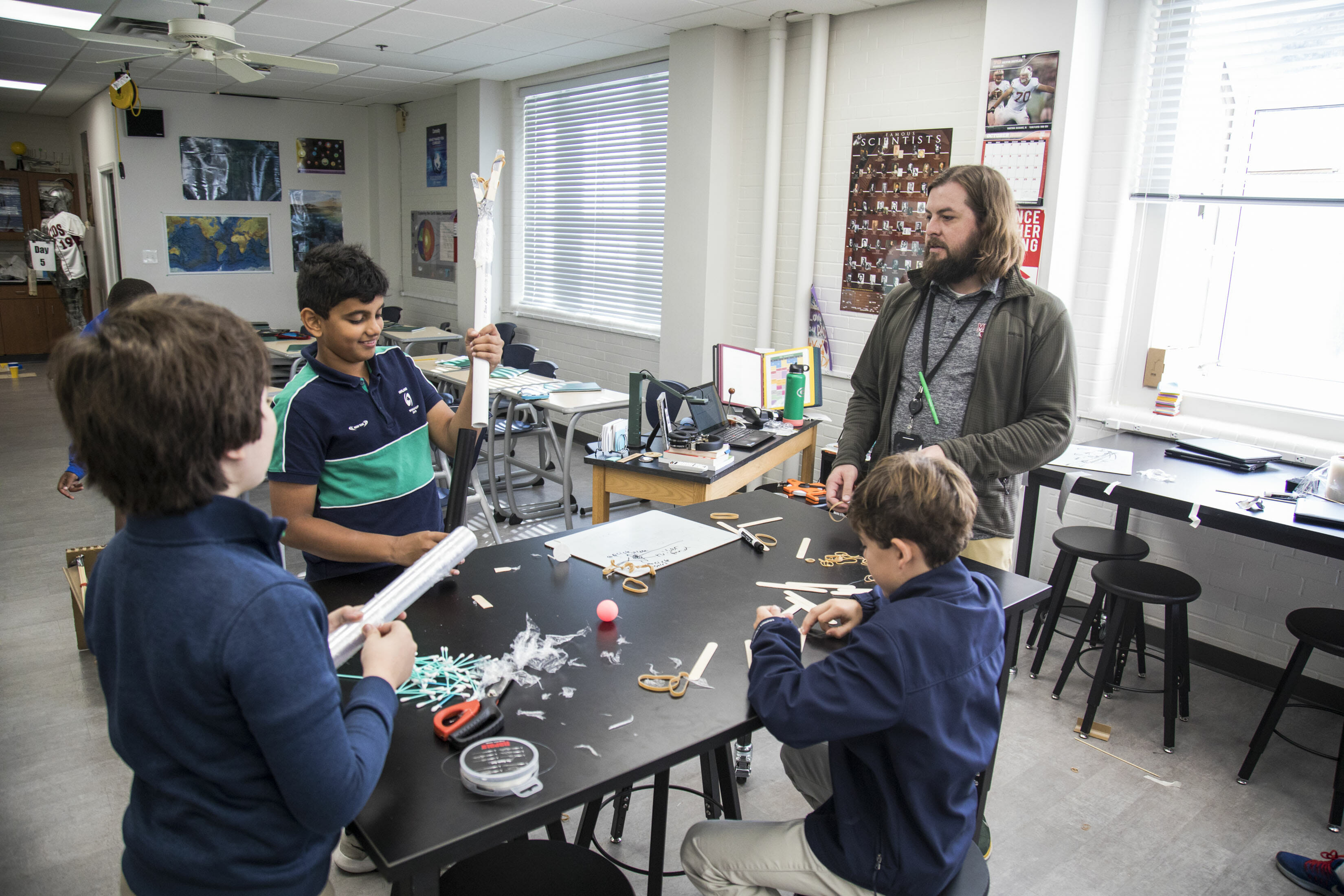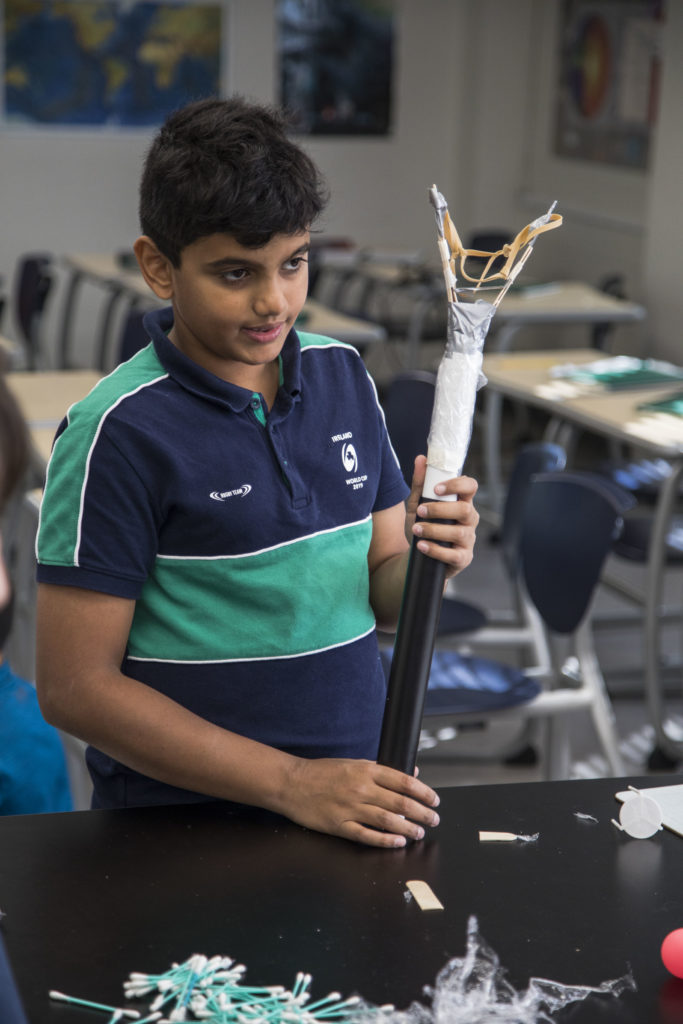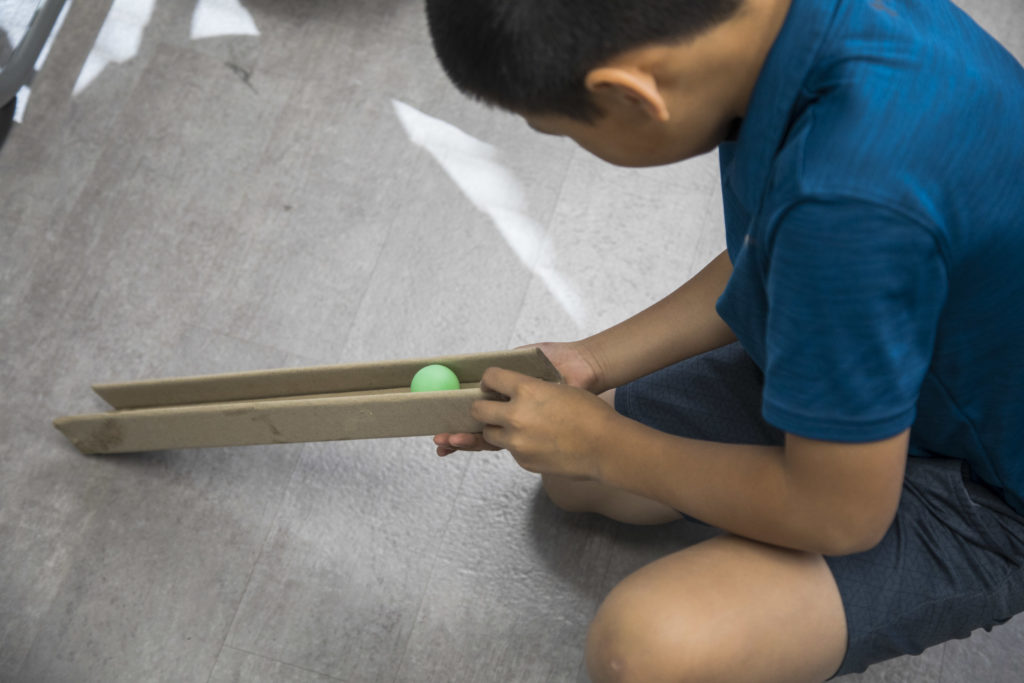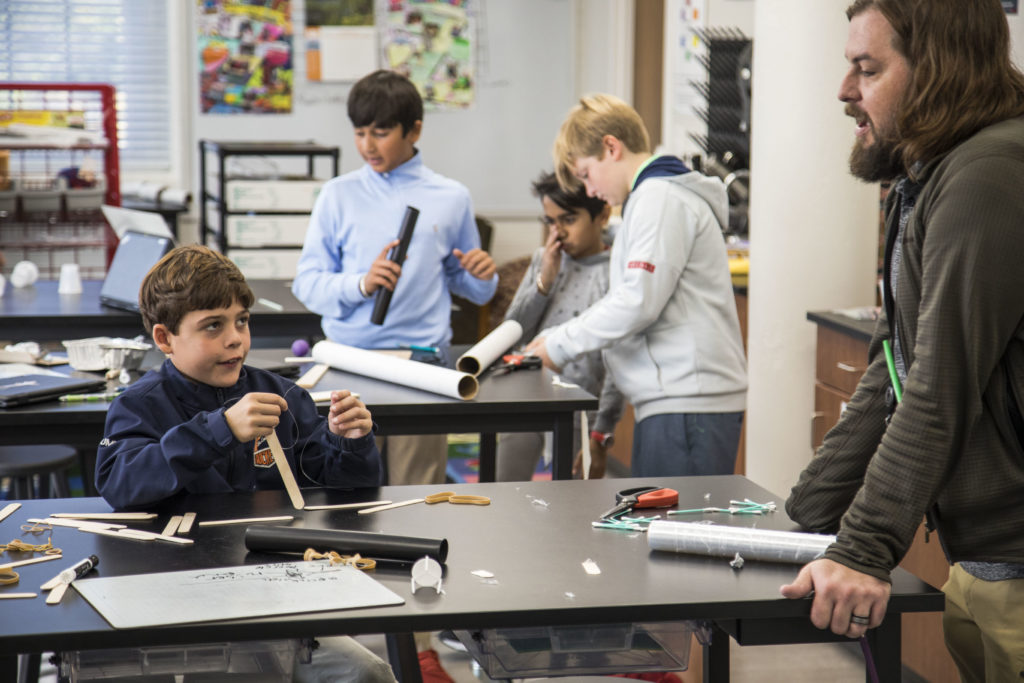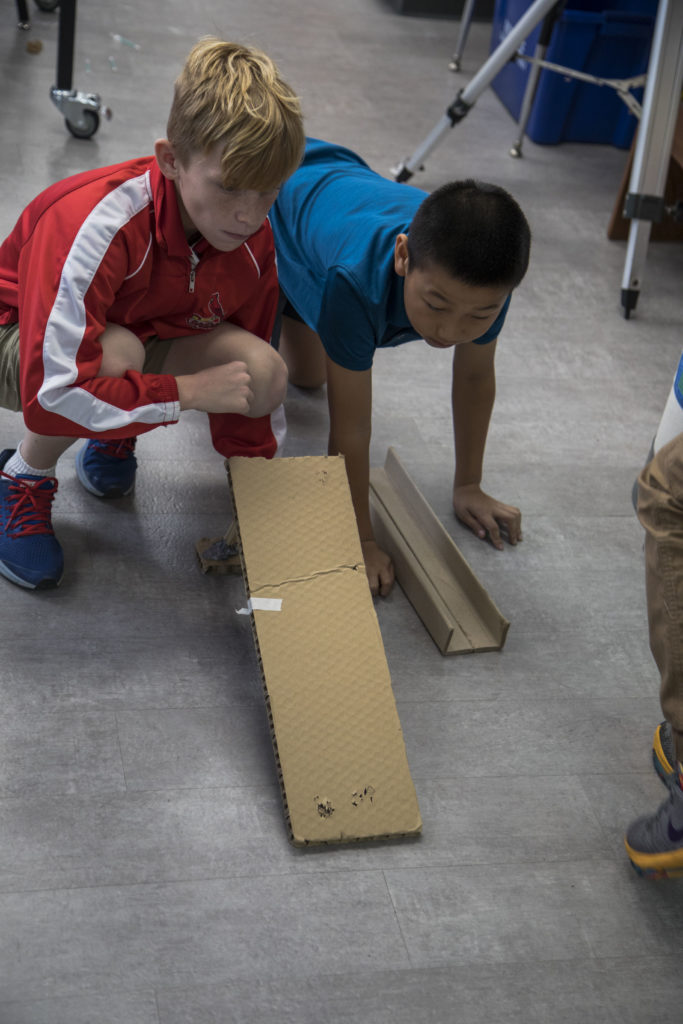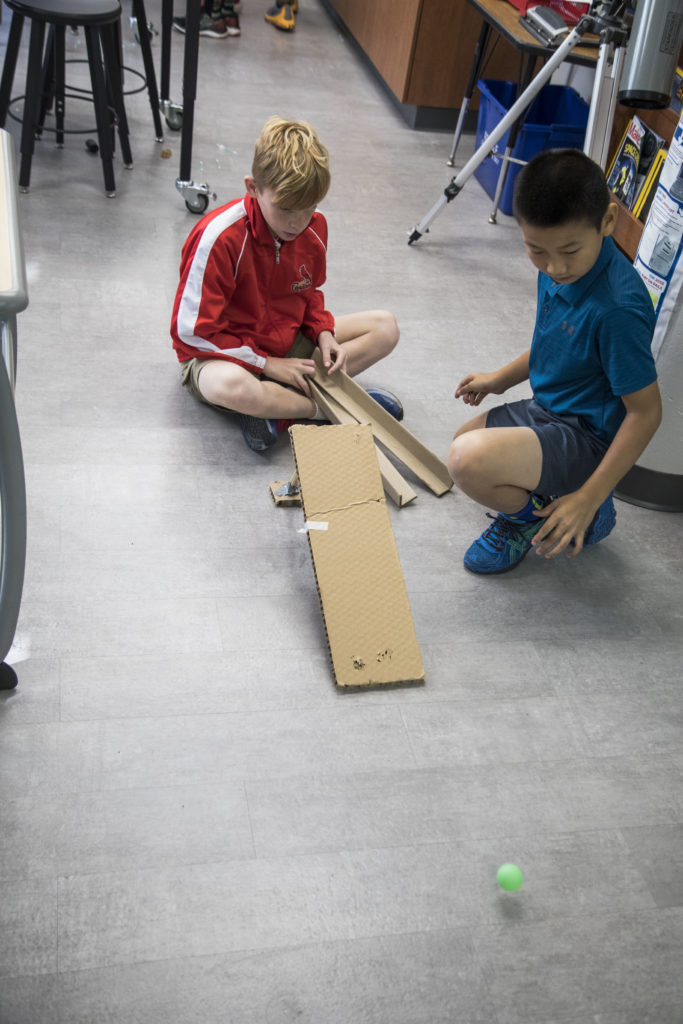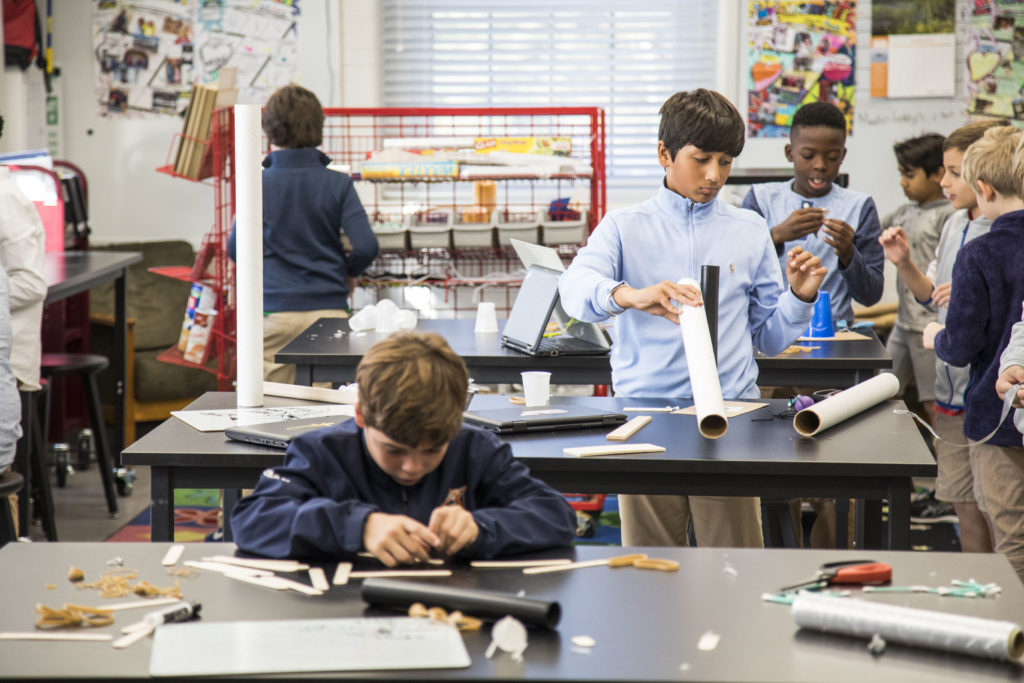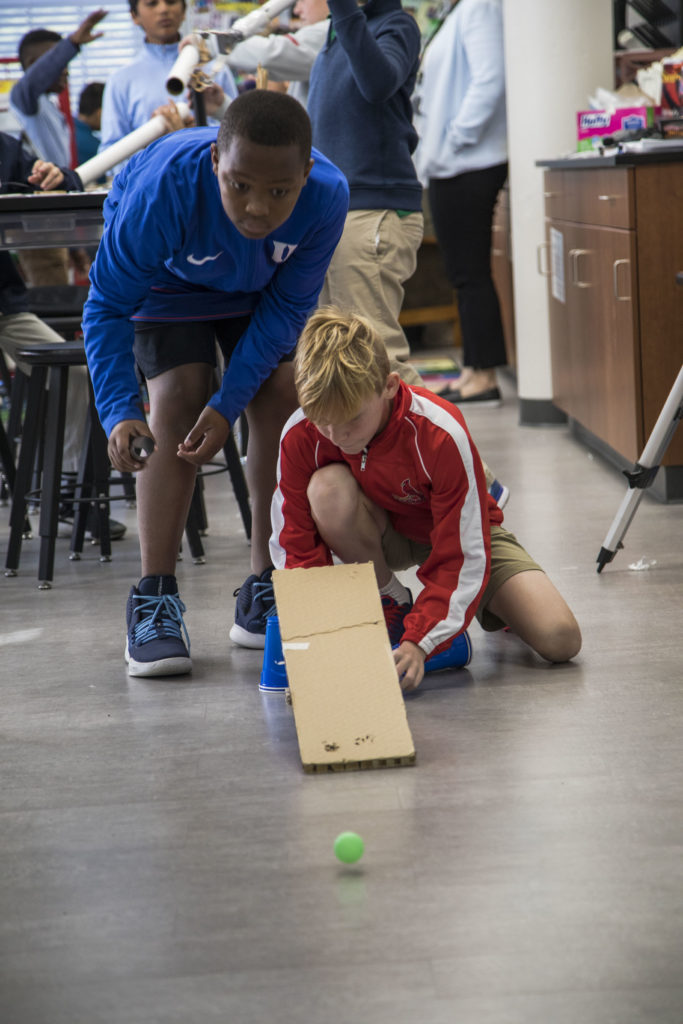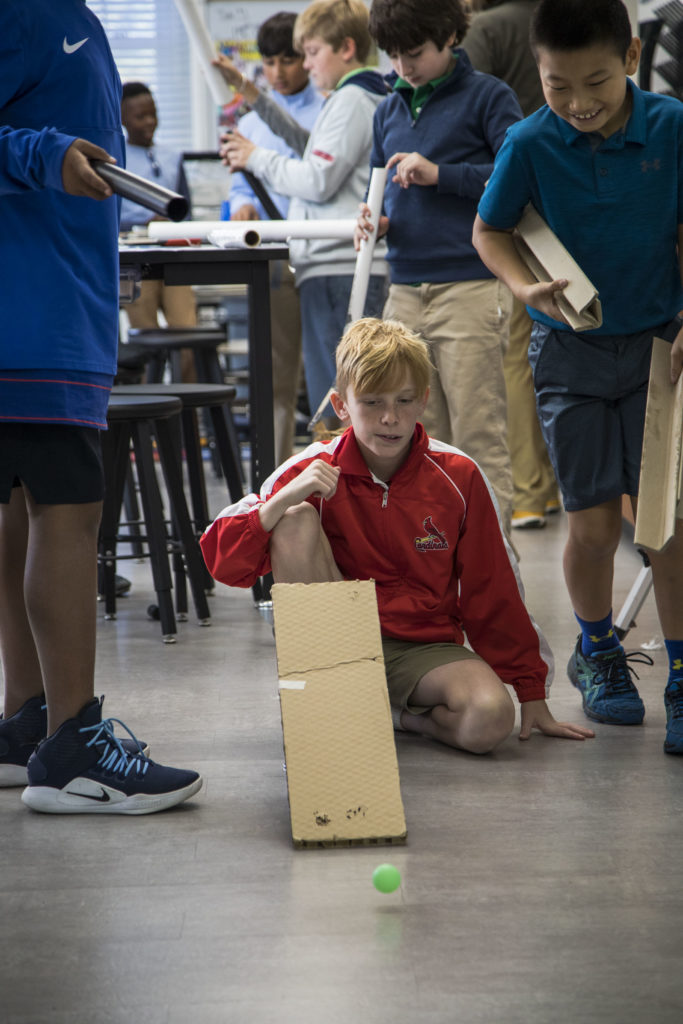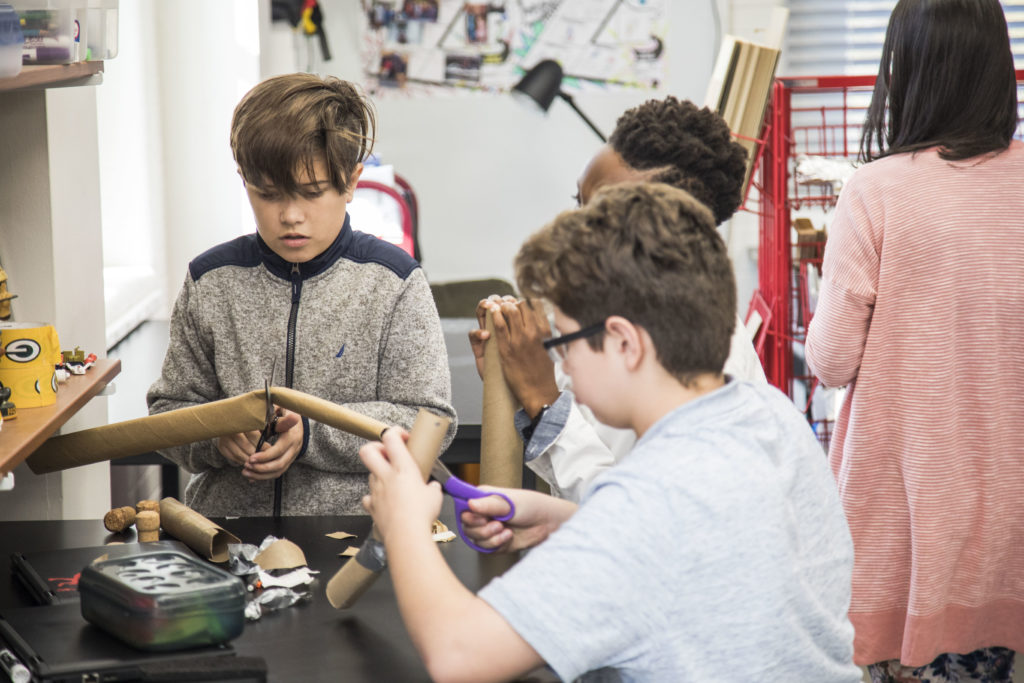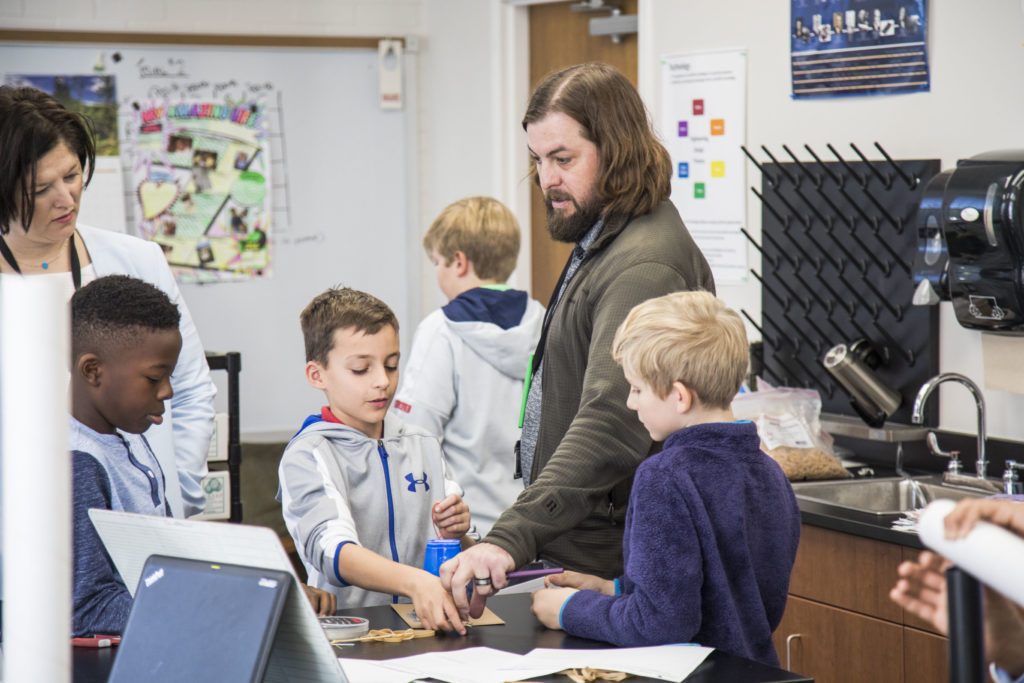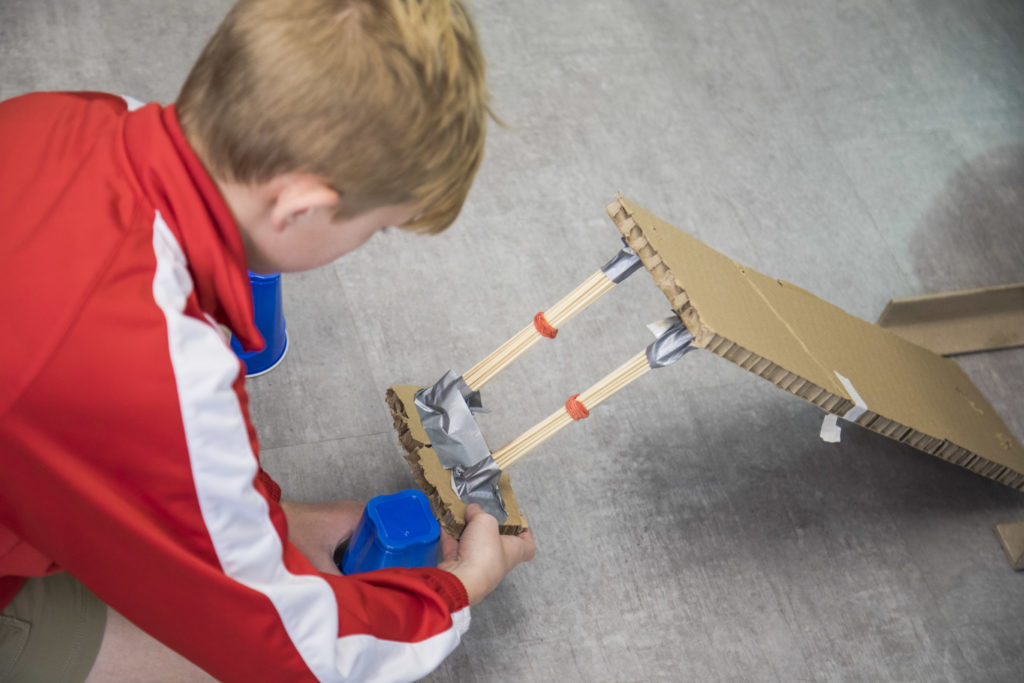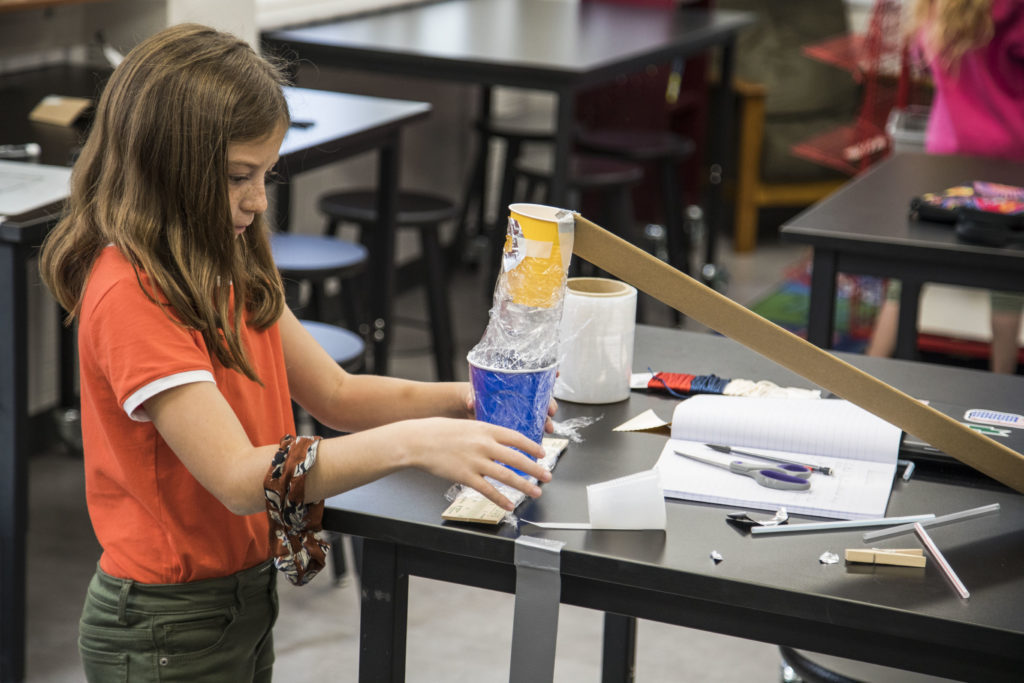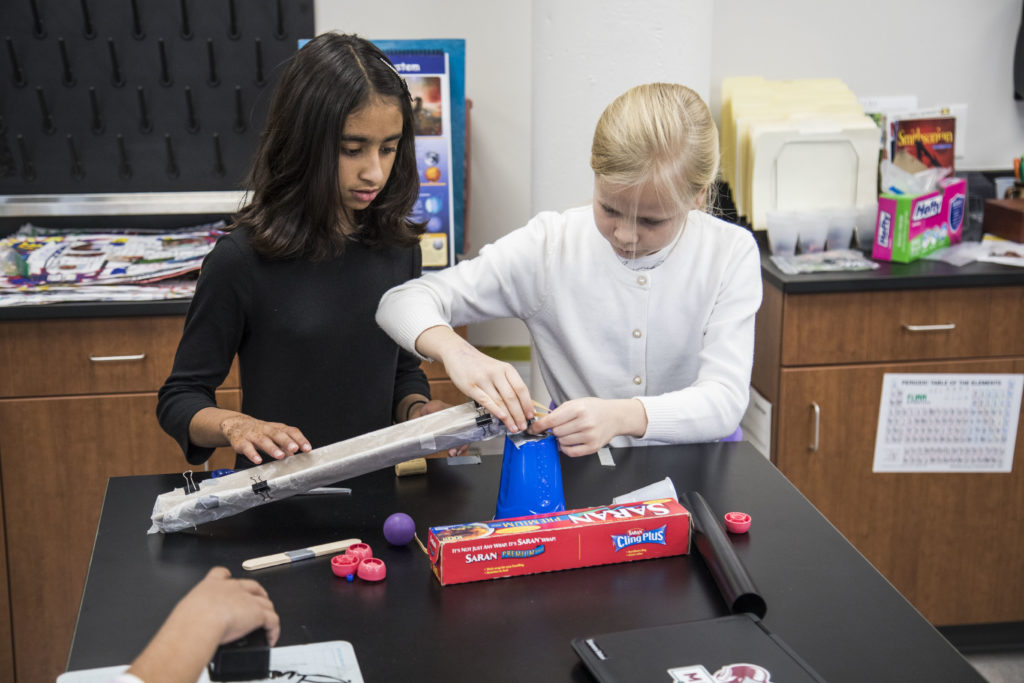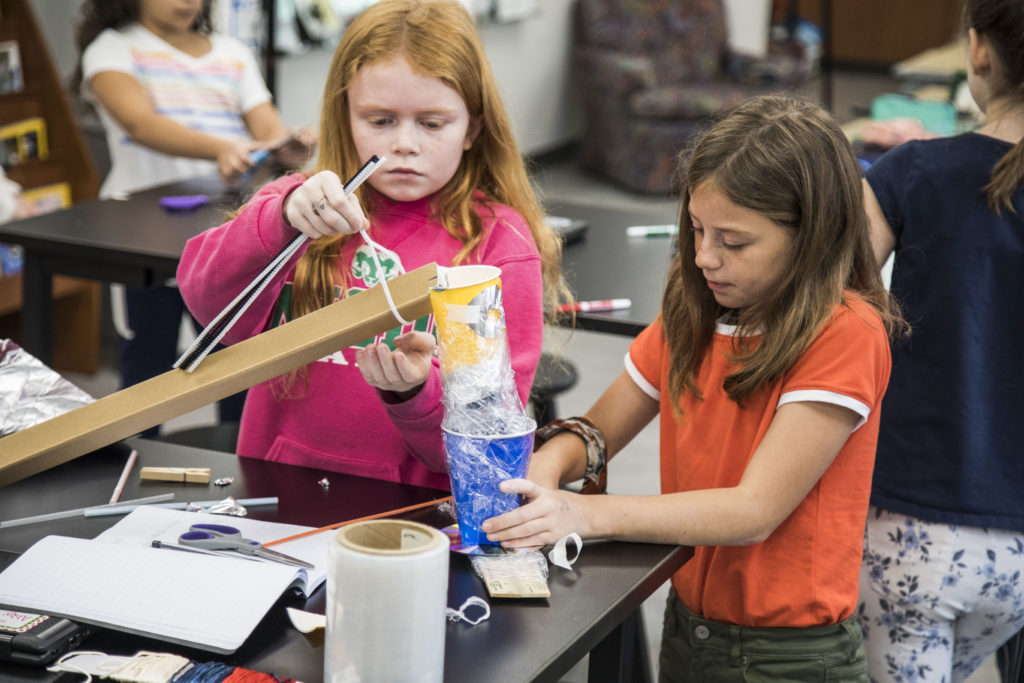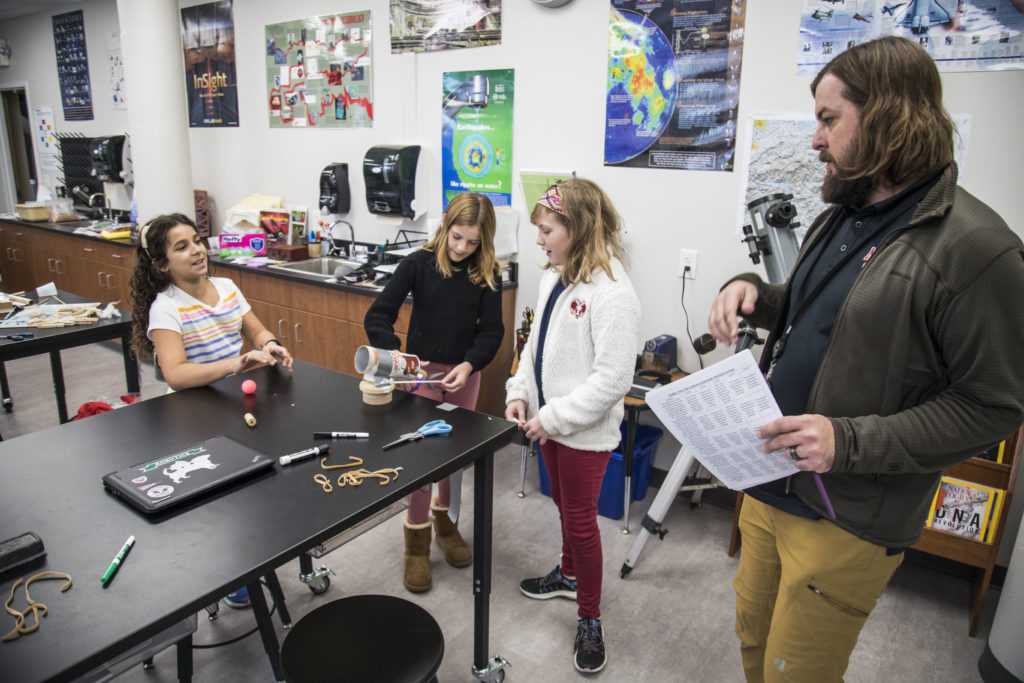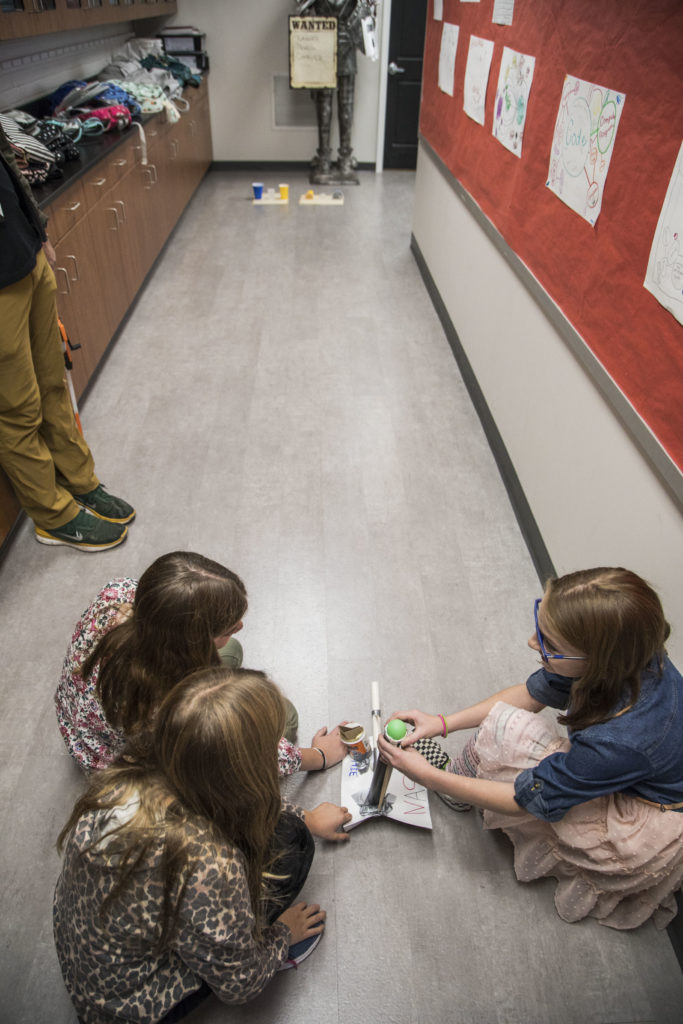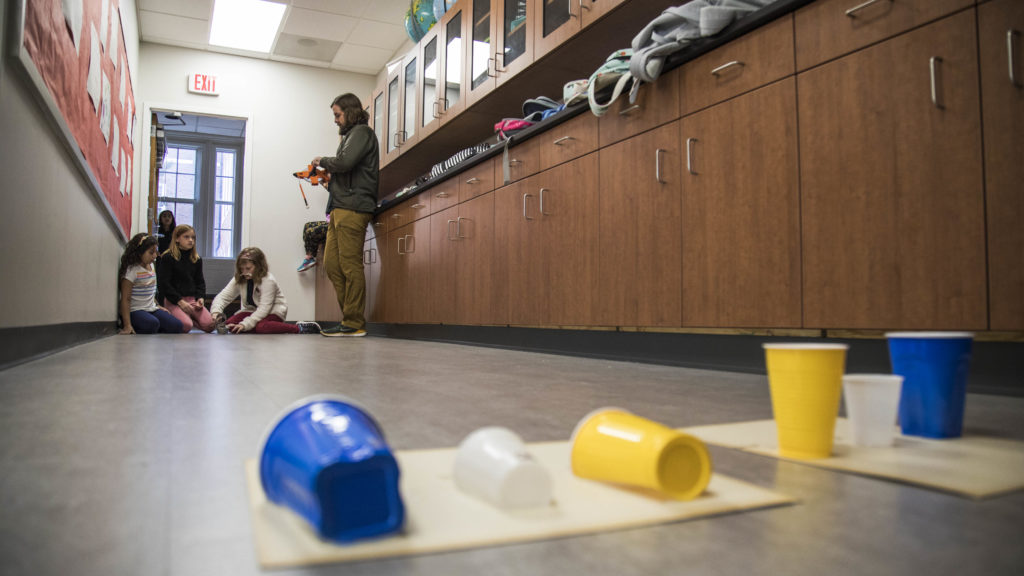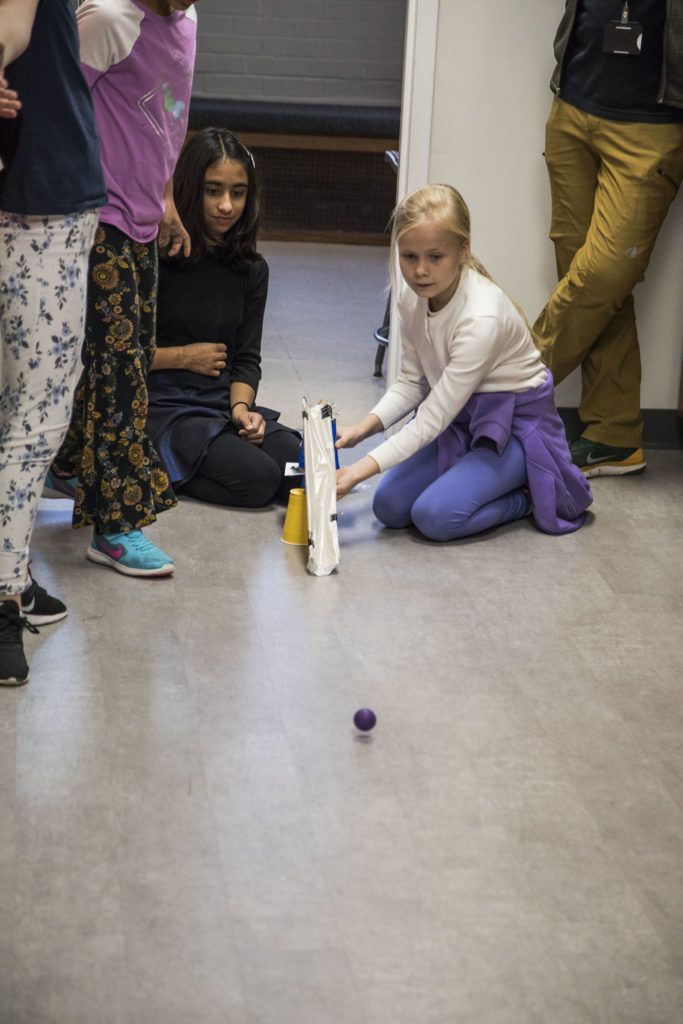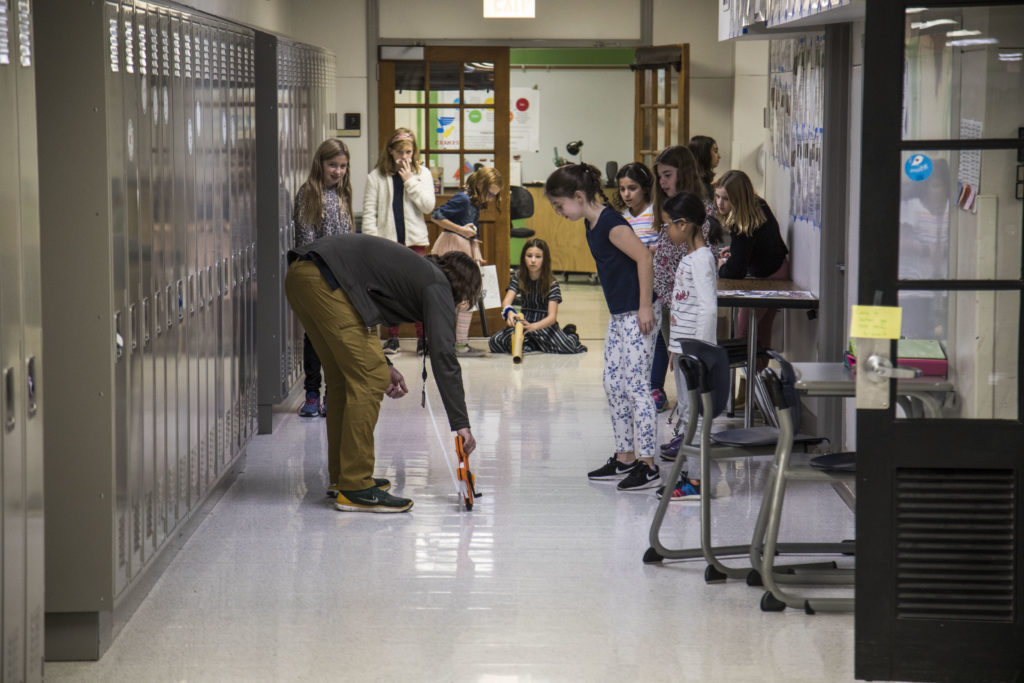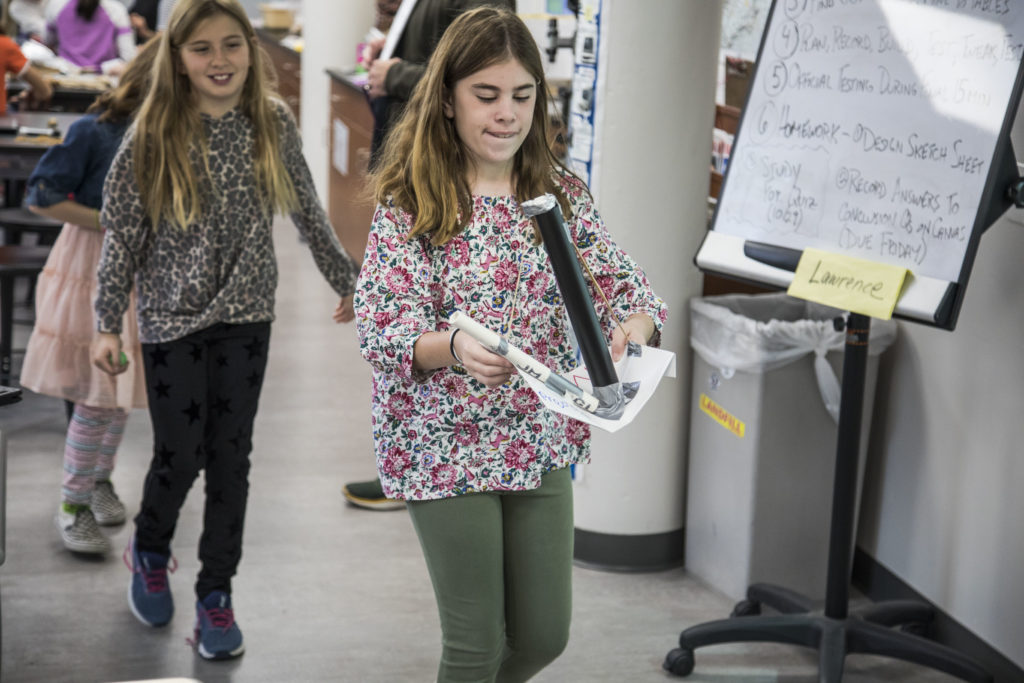Fifth graders in Mr. Branson Lawrence’s and Ms. Cassandra Galluppi’s science classes faced an engineering challenge this week: to build a “launcher” that could pass a series of tests.
With only a limited amount of materials such as rubber bands, old cardboard tubes and wooden rods, students constructed a device that could “launch” a ping pong ball—and they did it in 45 minutes. At the end of the construction phase, students tested their devices and earned points by launching their ball from a set point into plastic cups of varying sizes. The smaller the cup, the more points they earned.
Although the challenge asked for a “launcher,” that didn’t mean the device had to be a catapult or slingshot. The students could also construct simple ramps to achieve the same effect. The point was to build a device that would use both force and motion to move the ball towards its goal.
In addition to testing the devices for accuracy, these 5th grade engineers also tested for distance. Students moved to the hallways to test and measure how far their devices could launch the balls.
The challenge was a wonderful way to put the scientific concepts of potential and kinetic energy they had just studied to use in a hands-on and engaging way, with an emphasis on critical thinking and teamwork.
